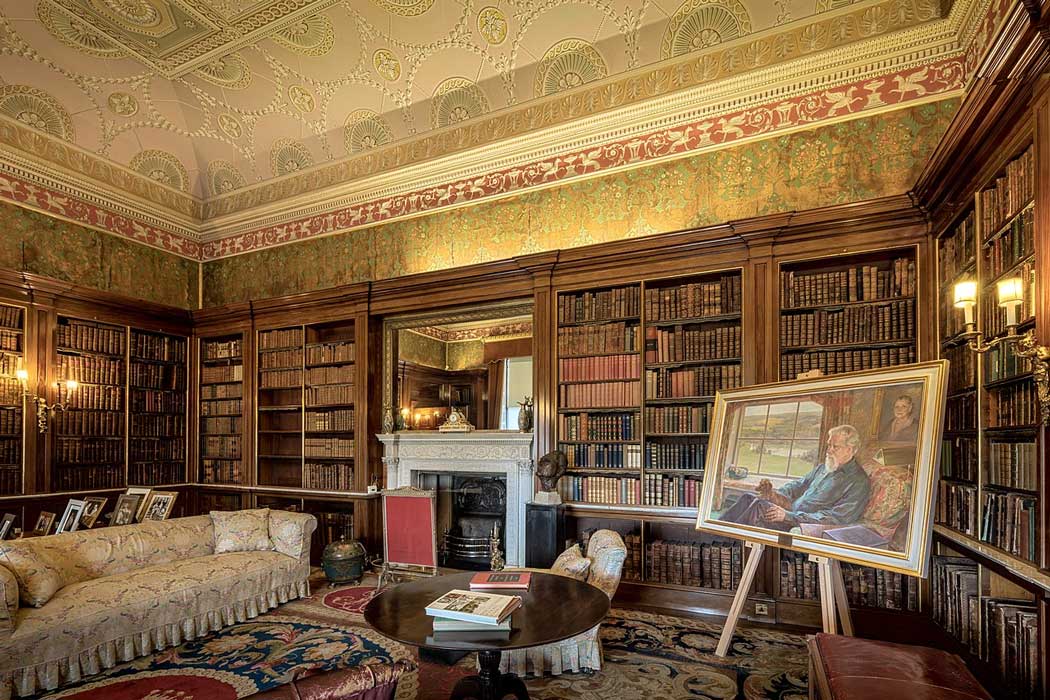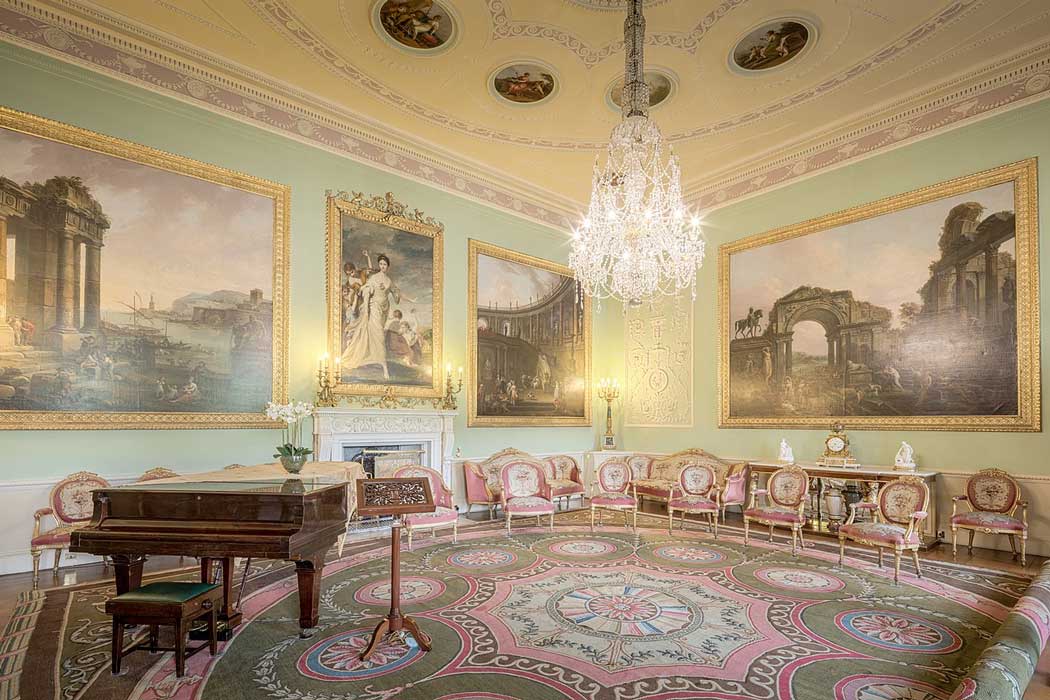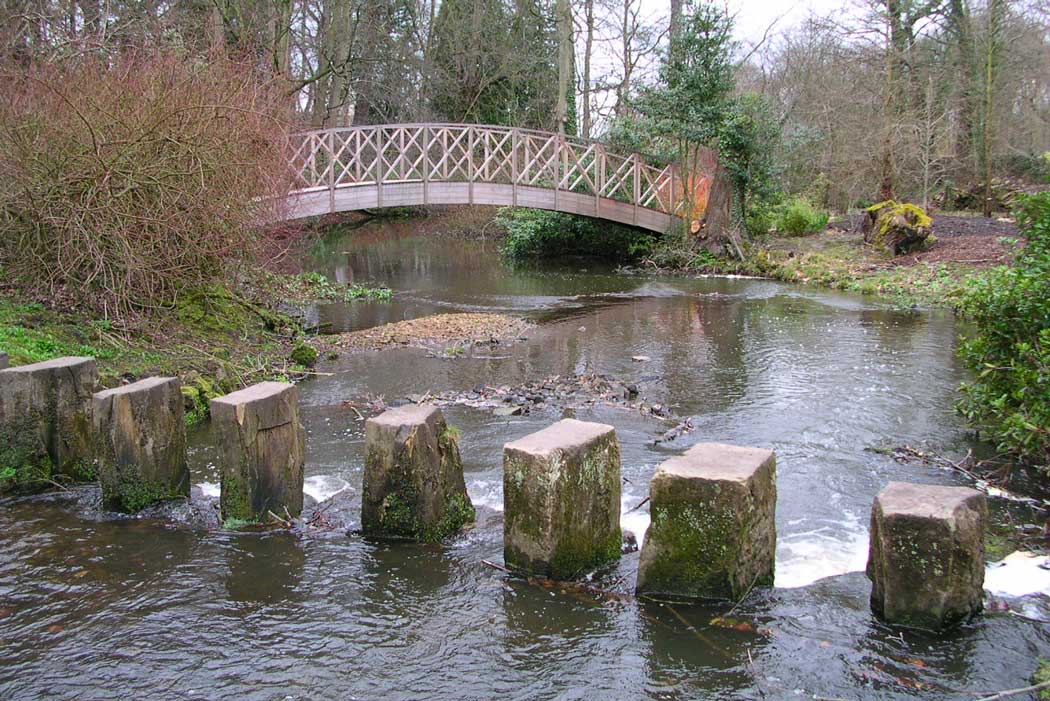Harewood House is a large country house in Harewood, around midway between Leeds and Harrogate. The Grade I-listed building is one of the grandest stately homes in England, and it is also one of the more accessible for those who do not have access to their own car.
The house was built for Edwin Lascelles, 1st Baron Harewood, between 1759 and 1771. It was designed by John Carr, a prominent architect who designed several other country houses in Yorkshire, and it was expanded in the 1840s by Sir Charles Barry, who added additional storeys to the house to provide additional accommodation for the 13 children of Henry Lascelles, 3rd Earl of Harewood. Sir Charles Barry is best known for his work on Highclere Castle, Manchester Art Gallery and the Houses of Parliament.
The interiors were designed mostly by Robert Adam and the grounds by Lancelot ‘Capability’ Brown.
The house was used as a hospital during the Second World War and after the war, it opened regularly to the public to host a number of music festivals.
Both Thomas Girtin and JMW Turner visited the house in the late 18th century and painted watercolours of the outdoor landscape. In August 1999, Elton John performed an outdoor concert in the grounds and the house has been used as a filming location for both the 1991 film King Ralph, the 2019 Downton Abbey film and also for the ITV television series Victoria (2016–2019). Another ITV television series, Emmerdale, is also filmed on the estate, although this is in a separate location far from the house.
What to see at Harewood House
When Harewood House was built in the 18th century, Edwin Lascelles, 1st Baron Harewood, wanted to do everything properly, employing the finest craftspeople of the day and filling the house with art and the finest furniture and ceramics. These can be seen in the staterooms on the main floor, which are decorated in the opulent style that was popular during this period.
The grand Entrance Hall features ceilings and friezes that were designed by Robert Adam and created by Joseph Rose and William Collins. A highlight of the Entrance Hall is Adam, a large sculpture carved by Sir Jacob Epstein from a single piece of Derbyshire alabaster.

The Old Library, one of three libraries at Harewood House, has Chippendale chairs and a large Regency-era mahogany desk.

Mary, Princess Royal and Countess of Harewood married Henry Lascelles, 6th Earl of Harewood in 1922 and she moved into Harewood in 1929. Princess Mary’s Dressing Room is one of several rooms in the house that were designed specifically for her.

The East Bedroom was where Edwin Lascelles slept and it features Chinese wallpaper that is in remarkably good condition considering that it is around 250 years old.

The Watercolour Rooms were originally used as a bathroom and a dressing room and have since been adapted to display items from Harewood’s collection of watercolours.
Lord Harewood’s Sitting Room, in the west wing of the house, is decorated to reflect the tastes of David and Diane Lascelles, 8th Earl and Countess of Harewood. It features doorframes and a fireplace designed by Robert Adam.

The State Bedroom features an ornate bed that is considered to be one of the most unique of Thomas Chippendale’s creations. This room was rarely used and reserved for only the most important visitors, which have included the Grand Duke Nicholas of Russia in 1816 and Princess Victoria who stayed here in 1835 prior to her coronation.

The Spanish Library was originally built as a dressing room, en-suite to the State Bedroom next door but was converted into a library when Charles Barry was working on the expansion of Harewood House.

The Main Library is the main living room in the house. It features mahogany bookshelves by Sir Charles Barry as well as paintings by Nicholas Dall and JMW Turner.

The Yellow Drawing Room features furnishings by Chippendale and distinctive golden yellow wallpaper. During the 19th and 20th centuries, this room was known as the Rose Drawing Room but a 1990s restoration bought back its original 18th-century colour scheme.

The Cinnamon Drawing Room features family portraits and ornate mirrors.

The Gallery is the largest room at Harewood House. It features an ornate ceiling designed by Robert Adam plus Chippendale furnishings and walls adorned with art.

Harewood’s State Dining Room was extensively modified during Sir Charles Barry’s 1840s expansion of the house. It features tall ceilings, Chippendale furniture and walls covered in art. The room is still used for private functions and formal dinners.

The Music Room features a Steinway grand piano purchased by Princess Mary and Henry Lascelles, 6th Earl of Harewood. This room is considered the most faithful representation of Robert Adam’s design as the furnishings, carpets and wall coverings are all original, dating from when the house was first built in the 18th century.

In contrast to the staterooms, the servants quarters downstairs are considerably more utilitarian although even these areas are particularly grand in their own way.
The Steward’s Room was used as the office for Harewood’s most senior member of staff and was also used as a dining room for senior servants. It is the grandest of the rooms below stairs.
The Terrace Gallery is set up as an exhibition space for a programme of temporary exhibitions that focus mostly on contemporary art. This is in contrast to the art exhibited elsewhere in the house that has a more traditional style including a number of Italian Renaissance paintings in addition to family portraits by John Hoppner, Sir Thomas Lawrence and Sir Joshua Reynolds.
The Servant’s Corridors is an interesting area to visit that includes displays depicting the life and work of service staff at Harewood House.
Food preparation areas are rather extensive and include the Vegetable Scullery, the Pastry Room, the Still Room and Kitchen.
The Vegetable Scullery is where vegetables, grown on the estate, would have been prepared for meals by Harewood’s domestic servants and the Pastry Room was where cakes, biscuits and pastries were made. The Still Room was used for making jam and also for preparing breakfast and afternoon tea.
The Old Kitchen is one of the most impressive kitchens to be found in an English stately home. It underwent an extensive renovation in 1996 to show how it would have looked in the late 18th century.
![It takes a team of volunteers 50 hours each year to clean the 250 copper pots and utensils in Harewood House's Old Kitchen. (Photo: Graham Elsom [CC BY-SA 2.0])](https://englandrover.com/wp-content/uploads/2020/11/harewood-house-kitchen.jpg)
Princess Mary’s Garden Room features a small exhibition on the life of Princess Mary, who lived at Harewood House for over 30 years. Princess Mary was the daughter of George V, sister to Edward VIIII and George VI and Queen Elizabeth II’s aunt.
Events and temporary exhibitions at Harewood House
Harewood House hosts a programme of temporary exhibitions in addition to the other attractions within the house and its gardens. Current and planned events and exhibitions include:
Austen and Turner: A Country House Encounter
This exhibition (until 19 October 2025) marks 250 years since the births of Jane Austen (1775–1817) and JMW Turner (1775–1851). It brings their work together for the first time, exploring their shared interest in the British country house and its landscape. The exhibition includes Turner’s paintings, Harewood’s first edition of Sense and Sensibility and rarely seen artefacts. Contemporary art and writing also examine the continuing impact of Austen’s and Turner’s creative legacies on how we view the Regency era.
The gardens and grounds
The house is part of a large estate that features 400ha (1,000 acres) of landscaped grounds designed by Capability Brown, including 40ha (100 acres) of gardens near the house that include a Himalayan garden with a stupa, a bird garden and an adventure playground.
The Terrace and Parterre comprise the most formal of the gardens at Harewood. These were built in the 1840s by Sir Charles Barry and they are set on two levels with over 1.6km (1 mile) of box hedging and more than 20,000 plants and bulbs the Parterre level and a cafe that is a popular spot for afternoon tea or pre-dinner drinks on the upper Terrace level.
![The Terrace and Parterre comprise the most formal of the gardens at Harewood. (Photo: Paul Lakin [CC BY-SA 3.0])](https://englandrover.com/wp-content/uploads/2020/11/harewood-house-terrace.jpg)

The Lakeside Garden was designed by Capability Brown during the 1770s. It was designed with the Fish Pond (Harewood’s lake) as its centrepiece and it offers lovely vantage points of Harewood House from the southern side of the lake. Boat trips take place on the Fish Pond on weekends and bank holidays and on Thursdays and Fridays during school holidays.
The Walled Garden is the oldest garden at Harewood. It was originally set up as a fruit and vegetable garden and it is still used for that purpose today with many of the garden’s produce used by the Courtyard restaurant.
Other buildings on the Harewood estate
The house is a Grade I-listed building and several of the smaller buildings on the grounds have been listed as Grade I, II and II*.
These smaller buildings include the 14th-century Harewood Castle and the 15th-century All Saints Church.
All Saints Church, just a five-minute walk northeast of Harewood House, was originally built in 1116 although the Norman-era church was completely rebuilt in the 15th century. It is noted for its collection of alabaster tombs, which is said to be one of the finest outside a cathedral.
Although Harewood Castle was originally founded in the 12th century, it was granted a licence to crenellate in 1366 at which point it was expanded to resemble more of a castle than a regular home. It was occupied until the 1630s and fell into disrepair shortly afterwards; however, a major restoration project conducted between 2000 and 2008 has greatly improved the condition of the Grade I-listed building.
The castle is at the northeastern corner of Harewood Park, just a short distance north of Harewood village.
![The 14th-century Harewood Castle is located at the northeastern corner of the estate, just a short distance north of Harewood village. (Photo: TJ Blackwell [CC BY-SA 3.0])](https://englandrover.com/wp-content/uploads/2020/11/harewood-castle.jpg)
Visiting Harewood House
Harewood House is 12.5km (8 miles) north of Leeds and 12km (7½ miles) south of Harrogate. It takes 20–35 minutes to get here if you’re driving from Leeds and it is a 20–30-minute drive from Harrogate.
Despite being a 15-minute walk from the closest bus stop, Harewood House is one of England’s easiest stately homes to visit if you’re relying on public transport to get around. The village of Harewood is on the busy A61 road, which links Leeds with Harrogate and several bus routes, including the Harrogate Bus Company’s route 36, which operates a frequent service between Leeds and Harrogate, stop in the village. The bus stop in Harewood is only a one-minute walk from the entrance to Harewood Approach (the long driveway that leads to the house).
It is a member of the Historic Houses Association and HHA members are entitled to one free visit per calendar year. Visitors arriving by public transport get a 50% discount on the admission charge upon presentation of your bus ticket.
Boat trips on the Fish Pond are not included in the admission fee and cost an additional £3 per person for £10 for a family (two adults and two children).
Although Harewood House is mostly wheelchair accessible, the wheelchair lift near the front of the house is not able to take electric wheelchairs.
There are several places to eat and drink on the grounds of Harewood House. These range from places to get ice cream and a light snack to more substantial meals.
The Courtyard Cafe serves sandwiches, salads and hot meals including homemade pies, the Terrace Tearooms on the upper level of the Terrace is a delightful spot for afternoon tea and the Horsebox Cafe serves coffee, tea and hot chocolate with cake and it is also a lovely spot for a gin and tonic. There is also an ice cream kiosk that operates during summer.
There is also an on-site gift shop that sells souvenirs and unique gifts.
There is a lot to see at Harewood House and you can easily spend between half and day and a full day here. Three hours would definitely be rushing it.
We may earn a small commission if you book after clicking the links below.


There are no comments yet.